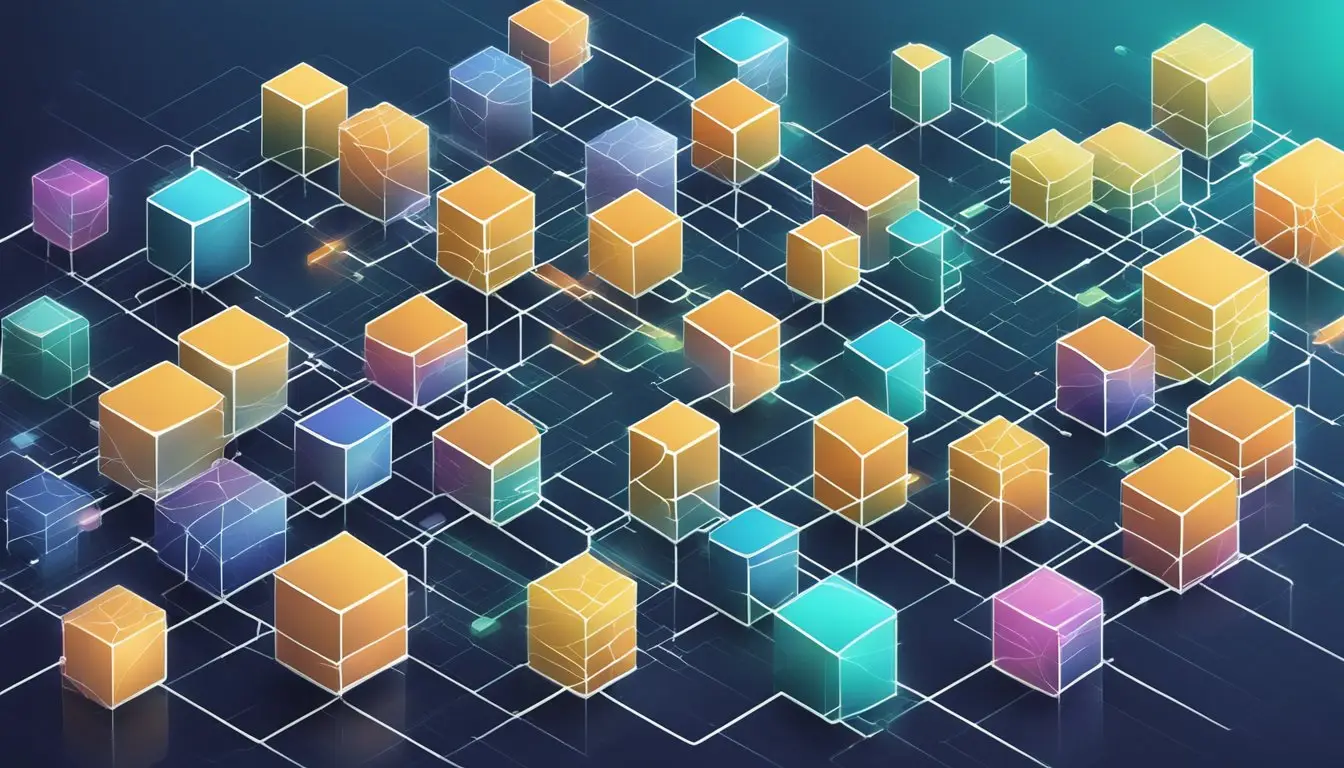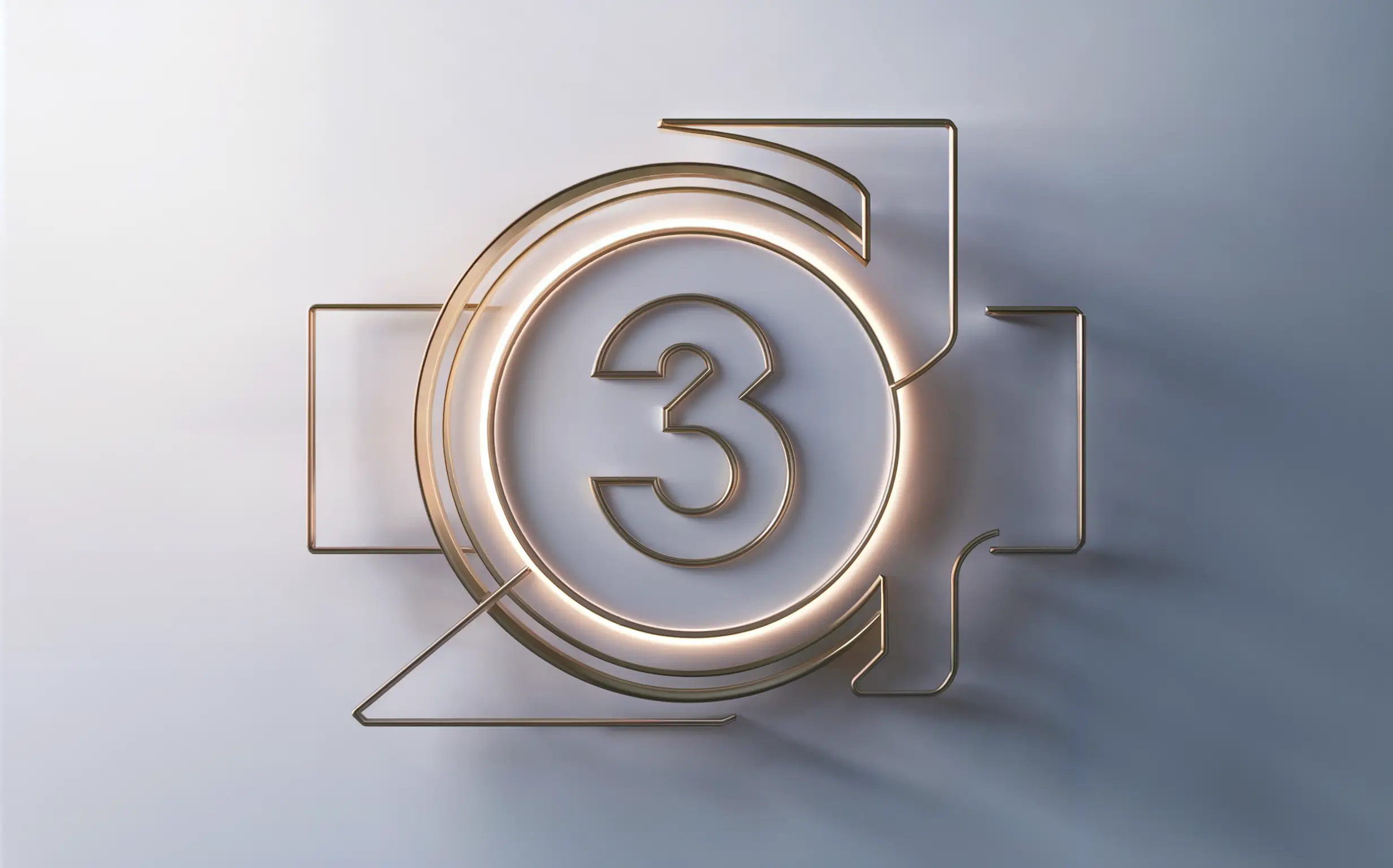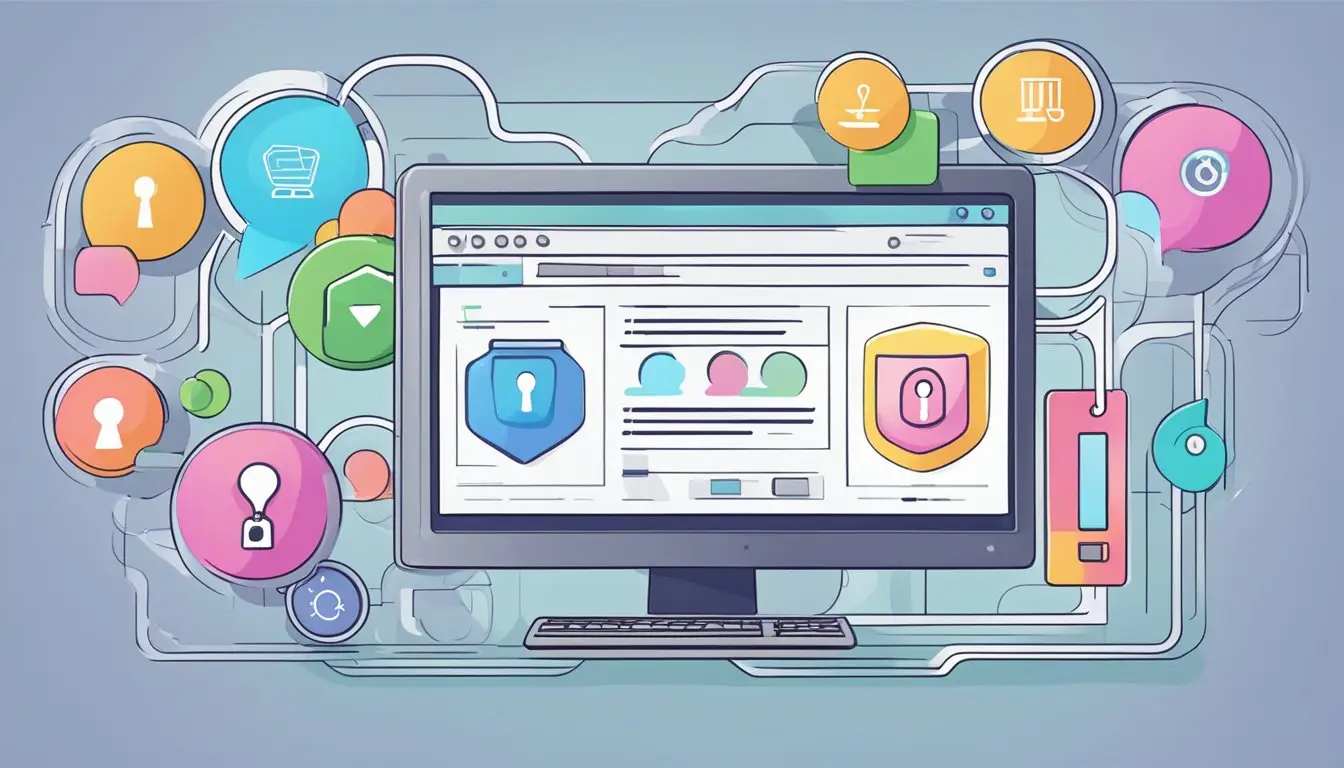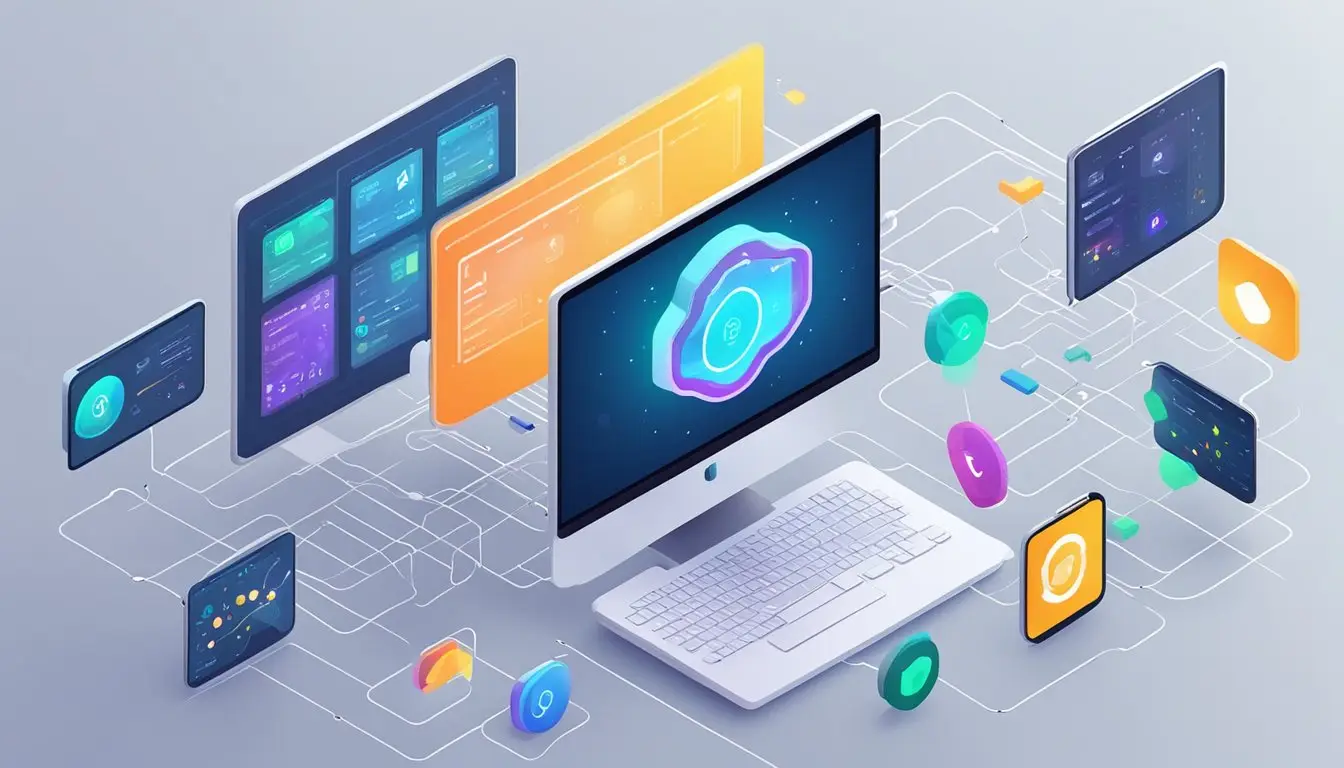Web 3.0 promises to change how we use the internet. Unlike the internet today, which relies on centralized servers and companies, Web 3 aims to shift the power back to you, the user.
Web 3 is built on blockchain technology, which allows you to truly own your data and digital assets.
You might be wondering, what makes Web 3.0 different from what we have now? In simple terms, the current web, often called Web 2.0, is controlled by large corporations. They own your data and can censor content.
Web 3, on the other hand, is decentralized. This means no single entity has control, making it more democratic and resistant to censorship.
Imagine a future where you have full control over your online identity and transactions without relying on intermediaries. This is the vision of Web 3.
To learn more about this transformative shift, keep reading and find out how Web 3 could impact your digital life.
Understanding the basics of Web 3.0
Web 3, also known as Web 3.0, represents the third generation of internet services. It aims to create a more decentralized, secure, and user-focused web.
Let’s break down its evolution, fundamental concepts, and key features to understand its importance better.
The evolution from Web 1 to Web 3
Web 1.0, starting from the 1990s to early 2000s, was the “read-only” phase. In this era, users could only consume content.
Websites were static, provided basic information, and had minimal interaction. Simple HTML pages dominated, allowing users to read but not interact much.
Web 2.0 began in the mid-2000s. This phase brought in the “read-write” era. It emphasized user interaction, social media, and dynamic content. Platforms like Facebook and YouTube grew, allowing users to publish their own content.
This phase focuses on collaboration, interactivity, and sharing.
Web 3.0 signifies a shift to a “read-write-own” internet. It’s built on decentralized technologies like blockchain. This transition focuses on giving users ownership of their data, enhancing security, and promoting trustless interactions.
The move from centralized control to user-centric services marks a profound change.
Defining Web 3.0: Concepts and principles
At the core of Web 3.0 are decentralization, user ownership, and blockchain technology.
Unlike Web 2.0, where companies control data, Web 3 decentralizes data. Using blockchain, data isn’t stored on a single server but spread across many nodes. This ensures transparency and security.
Web 3 is also trustless. This means interactions don’t require a central authority to verify them. Instead, blockchain technology enables trust without intermediaries. Users can transact directly, securely, and privately.
Permissionless nature is another principle. Anyone can participate without needing approval. This open access fosters innovation and inclusion. It eliminates barriers and allows for a more open web.
Key features of Web 3
Decentralization: Unlike traditional web systems, Web 3 uses decentralized networks. This spreads data across many nodes, enhancing security and reducing the risk of centralized failures.
User autonomy: Provides users control over their data and digital assets. You own and decide how to use your information without relying on companies.
Smart contracts: These self-executing contracts automatically enact terms when conditions are met. They remove the need for intermediaries, increasing efficiency and trust.
Enhanced privacy: Web 3 technologies prioritize user privacy. With tools like cryptographic methods, users can interact online without exposing personal information.
Tokenization: Represents digital assets and ownership in the form of tokens. This enables new economic models and interactions, from NFTs to decentralized finance (DeFi).
Blockchain technology

Blockchain technology is fundamental to Web 3, making it more secure and decentralized. Understanding its role can help you grasp the importance of this technological shift.
What is blockchain?
Blockchain is a digital ledger that records transactions across many computers. This ensures that the record cannot be altered retroactively without changing all subsequent blocks and getting consensus from the network.
Each transaction is added to a block, forming a chain.
Unlike traditional databases, blockchain is decentralized in that there’s no single entity that controls it.
Transparency is one of its main benefits because everyone can view the transactions. It’s widely known for powering cryptocurrencies, but its uses go way beyond that.
Blockchain can streamline processes in various industries by removing intermediaries. It offers a more transparent and secure way to conduct transactions and store data.
Why blockchain is crucial for Web 3.0
Web 3 builds on blockchain technology, enhancing internet functionality.
In Web 3, users control their own data and identity. Transactions are transparent and secure, thanks to the blockchain’s immutable nature.
This decentralization minimizes the risk of data breaches and censorship.
Blockchain also enables smart contracts, which are self-executing contracts with terms directly written into lines of code.
These contracts automatically enforce and execute agreements, reducing the need for intermediaries and increasing efficiency.
Decentralization and security
Decentralization makes Web 3 applications resistant to censorship and fraud. It also distributes control among many users, which enhances security.
Security is a key advantage of blockchain. Each block is cryptographically linked to the previous one, making it nearly impossible to alter without detection, thus preventing data integrity and helps prevent cyberattacks.
In Web 3, decentralization and security help users trust the system more. Whether you’re using blockchain for finances, health records, or other sensitive data, these features provide a higher level of confidence and control.
Cryptocurrencies and tokens
Cryptocurrencies and tokens play a crucial role in Web 3. They are essential for enabling decentralized networks and smart contracts, which are the foundation of the new, user-controlled internet.
About cryptos
Cryptocurrencies are digital or virtual currencies that use cryptography for security. They are decentralized and operate on blockchain technology. Popular examples include Bitcoin and Ethereum.
Cryptocurrencies provide financial freedom. Transactions are peer-to-peer, meaning no banks or intermediaries.
This makes them faster and often cheaper. Also, they are global, enabling transactions without borders.
Cryptocurrencies are creating new opportunities. From investment options to new methods for online payments, they are becoming a major part of the digital economy.
The Role of tokens in Web 3
Tokens are a type of cryptocurrency and are crucial for many Web 3 applications.
They represent a unit of value on their specific platforms and can be used in many ways. For instance, tokens are used to access decentralized applications (dApps) or vote in governance decisions.
There are different types of tokens:
- Utility tokens offer access to a service or product.
- Security tokens are digital assets backed by real-world assets.
- Governance tokens give users voting rights in a decentralized network.
Tokens also provide incentives. Many Web 3 projects reward users with tokens for contributing to the network.
This could mean anything from validating transactions to creating content. Rewards in the form of tokens help build active and engaged communities.
About smart contracts
Smart contracts are self-executing contracts with the terms directly written into code. They run on blockchain networks like Ethereum.
These contracts automatically execute and enforce agreements when conditions are met.
Smart contracts reduce the need for intermediaries. This leads to faster transactions and reduces costs. They are transparent and secure since they are recorded on the blockchain.
Common uses include handling transactions, managing assets, and even voting systems.
Smart contracts are programmable. This flexibility allows for complex transactions and applications. They can handle multi-step processes seamlessly.
As a result, they are foundational for creating decentralized autonomous organizations (DAOs) and other advanced applications in Web 3.
Decentralized Applications (DApps)

Decentralized applications (DApps) are revolutionizing the way software operates by using blockchain technology instead of traditional centralized servers.
In so doing, dApps offer new possibilities in terms of security, user control, and innovation.
Introduction to DApps
DApps are applications that run on blockchain networks. Unlike regular apps, they are decentralized.
This means that you, as a user, have more control and security.
These apps are powered by smart contracts. The most well-known platform for DApps is Ethereum, but there are others like EOS and Tron.
DApps can be used for various purposes, including finance, gaming, social media, and more. Some popular DApps include CryptoKitties and Uniswap.
How DApps differ from traditional apps
Traditional apps rely on a central server for operations. This centralization can lead to vulnerabilities like hacking or data misuse.
In contrast, DApps operate on a decentralized network, making them more secure. Because they use blockchain, data is stored across multiple nodes, reducing the risk of censorship or single points of failure.
DApps often have a user interface that looks similar to regular apps but interact with the blockchain via smart contracts.
This means that the backend is decentralized, offering you benefits such as user autonomy and improved security.
Traditional apps can be faster and easier to build because they don’t require blockchain integration. However, DApps offer unique benefits like greater privacy, security, and resistance to tampering.
Economic models In Web 3
Web 3 introduces new economic models that change how digital economies work. The two key areas are tokenomics and decentralized finance (DeFi).
Tokenomics
Tokenomics involves the use of tokens or digital assets within a blockchain.
Tokens represent ownership, voting rights, or access to services. They can be fungible tokens like cryptocurrencies, or non-fungible tokens (NFTs) representing unique items.
Creating and distributing tokens follows rules set in smart contracts. Initial Coin Offerings (ICOs) and Security Token Offerings (STOs) are common methods.
Tokens can also offer incentives for users to participate in a network.
The value of tokens depends on supply and demand. Tokenomics can influence user behavior, encouraging activities like staking, voting, or providing liquidity.
Decentralized Finance (DeFi)
DeFi allows financial services without centralized institutions like banks. It uses blockchain technology to provide lending, borrowing, and trading through decentralized platforms.
You can earn interest by lending your crypto assets, or borrow against them. DeFi platforms often use tokens as collateral.
Smart contracts automate and enforce financial agreements, reducing the need for intermediaries.
Popular DeFi services include decentralized exchanges (DEXs) and yield farming, where you earn rewards by providing liquidity.
Stablecoins are also a crucial part, offering a stable value tied to traditional currencies.
By removing intermediaries, DeFi aims to reduce costs and increase financial accessibility for everyone.
Identity and privacy

Unlike Web 2, where big companies manage much of your information, Web 3 gives you the tools to manage and protect your data.
Self-Sovereign Identity (SSI)
Self-Sovereign Identity (SSI) refers to a model where you control your own digital identity. This means you don’t rely on centralized entities like Google or Facebook to manage your information.
Instead, you use decentralized identifiers (DIDs) and verifiable credentials.
With SSI, you store your credentials in a digital wallet.
You can provide proof of identity without sharing unnecessary details. For example, proving you’re over 18 without revealing your actual birthdate.
This increases privacy and reduces the risk of identity theft.
You also gain more control over how and when to share your information. This means you can avoid data breaches that often happen with centralized databases.
Privacy enhancements over Web 2
Web 3 brings significant privacy improvements compared to Web 2. One major feature is the use of encryption and blockchain technology to secure data.
Another important aspect is that your data isn’t stored in a single place. Instead, it’s spread across multiple locations, reducing the risk of mass data breaches.
This decentralized system ensures that even if one server is compromised, your data remains safe elsewhere.
Interoperability and scalability
In Web3, interoperability means different blockchain networks can work together. This is important because it allows data and value to move easily between systems.
Think of it like how you can send an email from Gmail to Yahoo. The same goes for blockchain networks.
Scalability is about how well a blockchain can handle more transactions and users. Many blockchains struggle with this. Network congestion and high transaction fees are common issues.
Concepts like sharding and layer-2 solutions aim to tackle these problems.
Why Interoperability matters:
- Enhanced communication: Blockchains can talk to each other.
- Increased efficiency: Tasks spread across multiple networks.
- User flexibility: Users can switch between platforms easily.
Key components:
- Blockchain technology: The base layer for transactions.
- Smart contracts: Self-executing contracts.
- Decentralized Identity: Your identity, controlled by you.
- Tokenization: Turning assets into digital tokens.
Challenges:
- Fragmentation: Too many blockchains, not enough bridges.
- Security risks: More connections can mean more vulnerabilities.
- Complex standards: Not all blockchains follow the same rules.
Scalability solutions like sharding and layer-2 aim to make blockchains faster and cheaper.
Sharding splits the blockchain into smaller parts. Layer-2 solutions process transactions off the main chain. This reduces congestion but still keeps security and decentralization.
Challenges and limitations
Web 3.0 brings many promising features, but it also presents significant challenges. You need to be aware of these to make informed decisions.
Technical challenges
One key issue is scalability. Current blockchain technologies struggle to handle a large number of transactions quickly. This may cause delays and limit usability.
Interoperability between different blockchains is another hurdle. Many systems can’t easily communicate or share data. This makes integrating various applications difficult and can restrict functionality.
Poor user experience (UX) is a major barrier. Many Web 3.0 applications are complex and not user-friendly. This can discourage mainstream adoption, as people tend to prefer simple, straightforward interfaces.
Energy consumption is also a concern. Blockchain-based systems often require vast amounts of energy to operate. This not only raises environmental issues but can also lead to high operational costs.
Regulatory and ethical considerations
Regulation of Web 3.0 technologies like cryptocurrencies and dApps is still evolving. Governments are struggling to create clear laws. This uncertainty can create legal risks for users and developers.
Data privacy is another challenge. While Web 3.0 aims to give users control over their data, it also raises questions about data security. Ensuring personal information stays private yet accessible to users is a balancing act.
Ethical concerns include issues like the potential for financial crime and market manipulation. Decentralized platforms can make it easier to conduct illicit activities without oversight.
Intellectual property rights are also difficult to enforce. The decentralized nature makes it challenging to manage and protect digital assets. This creates a gray area regarding ownership and rights.
The Future Outlook of Web 3
Web 3 aims to create a decentralized internet, where users have more control over their data. Current trends suggest that blockchain technology will drive this change.
Many experts believe this shift will be significant. For instance, Web 3 could change how you interact online. Instead of centralized platforms, decentralized apps (dApps) may become common.
Key potential benefits:
- User control: You might own and manage your data.
- Transparency: Transactions could be public and verifiable.
- Security: Decentralized systems may reduce hacking risks.
Challenges include:
- Scalability: Handling large amounts of data is complex.
- Adoption: Many people rely on current systems. Switching might be slow.
- Regulation: Governments need to address legal concerns.
Web 3 also intersects with other technologies. For example, expanding the decentralized internet could integrate with AI, making processes more efficient.
Investment in Web 3 is growing. Numerous startups focus on developing new dApps and blockchain innovations. This trend indicates strong confidence in Web 3’s potential.
Educational resources, as seen on PCMag, help you understand this technology and its implications.
Web 3.0 FAQs
What are the core characteristics that define Web 3.0?
Web 3.0 is built on decentralization, trustless and permissionless interactions, and user ownership. It moves away from central servers and instead uses blockchain and peer-to-peer networks.
This change aims to give users more control over their data and online interactions.
How can blockchain technology be related to Web 3.0?
Blockchain is crucial for Web 3.0 as it provides a decentralized infrastructure. It enables secure, transparent transactions and data storage without needing a central authority.
This technology underpins various Web 3.0 applications such as cryptocurrencies, smart contracts, and decentralized apps (dApps).
In what ways can individuals participate or contribute to Web 3.0?
You can get involved in Web 3.0 by using decentralized applications (dApps), participating in DAOs (Decentralized Autonomous Organizations), and engaging with decentralized finance (DeFi) platforms.
You can also create and trade NFTs (Non-Fungible Tokens) or contribute to open-source projects in the Web 3.0 ecosystem.
What are some practical examples of Web 3.0 applications in use today?
Examples of Web 3.0 applications include DAOs, DeFi platforms like Uniswap, the Metaverse, and blockchain-based social networks.
NFTs represent unique digital assets traded on marketplaces like OpenSea. dApps like those on the Ethereum blockchain provide various services, from gaming to finance, without intermediaries.
How does Web 3.0 enhance user privacy and security compared to previous web generations?
Web 3.0 enhances privacy by enabling anonymous and secure transactions through blockchain technology.
Users have control over their data, reducing reliance on central entities that could potentially misuse it.
Tools like encrypted messaging and decentralized identity management further protect user information.
What basic knowledge should one have before starting to invest in Web 3.0 technologies?
Before investing in Web 3.0 technologies, you should understand blockchain, cryptocurrencies, and the specific technologies behind them.
It’s important to research projects, understand their goals, and assess risks.
Knowing how to use a digital wallet and secure your digital assets is also vital.
